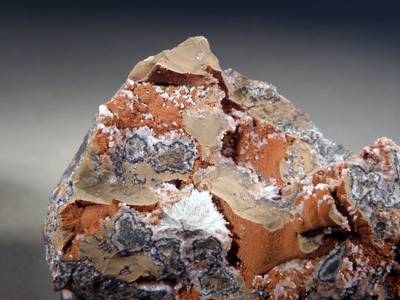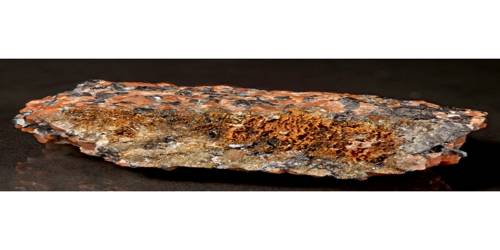Caryopilite (synonymous with ectropite and ektropite) is a brown-colored mineral with formula (Mn2+, Mg)3Si2O5(OH)4. It is tiny brown-red spherules of caryopilite in clusters to <1mm set on light pink crystalline Rhodochrosite. It is a monoclinic mineral containing arsenic, chlorine, hydrogen, iron, magnesium, manganese, oxygen, silicon, and zinc. The mineral was discovered in 1889 from a mine in Sweden. It was named for the Greek words for walnut and felt in reference to its appearance.
General Information
- Category: Phyllosilicate minerals
- Formula: (Mn2+, Mg)3Si2O5(OH)4
- Crystal system: Monoclinic
- Crystal class: Domatic (m) (same H-M symbol)

Properties
Caryopilite is reddish-brown to tan in color naturally; in thin sections, it is light brown to yellow. The mineral occurs as tabular pseudohexagonal crystals, commonly as rosettes, up to 4 millimeters (0.16 in). It can also be stalactitic, reniform with a concentrically radiating structure, or have a massive habit.
- Formula mass: 3 to 3.5
- Color: Reddish brown, tan Light brown to yellow in thin section
- Cleavage: Perfect on {001}
- Luster: Vitreous
- Streak: Light Brown
- Diaphaneity: Semitransparent
- Density: 2.83–2.94 (measured)
Structure
Caryopilite consists of triangular islands formed by tetrahedra rings coordinated with sheets containing octahedrally coordinated manganese. The crystal structure shows some short-range order, but linkages between islands are fully disordered. Thus, no unit cell can truly be defined.
The mineral forms as a product of metamorphism in manganese-bearing minerals. Caryopilite has been found in association with brandtite, calcite, gonyerite, jacobsite, lead, manganoan calcite, rhodonite, sarkinite, tirodite.
Information Source:
















